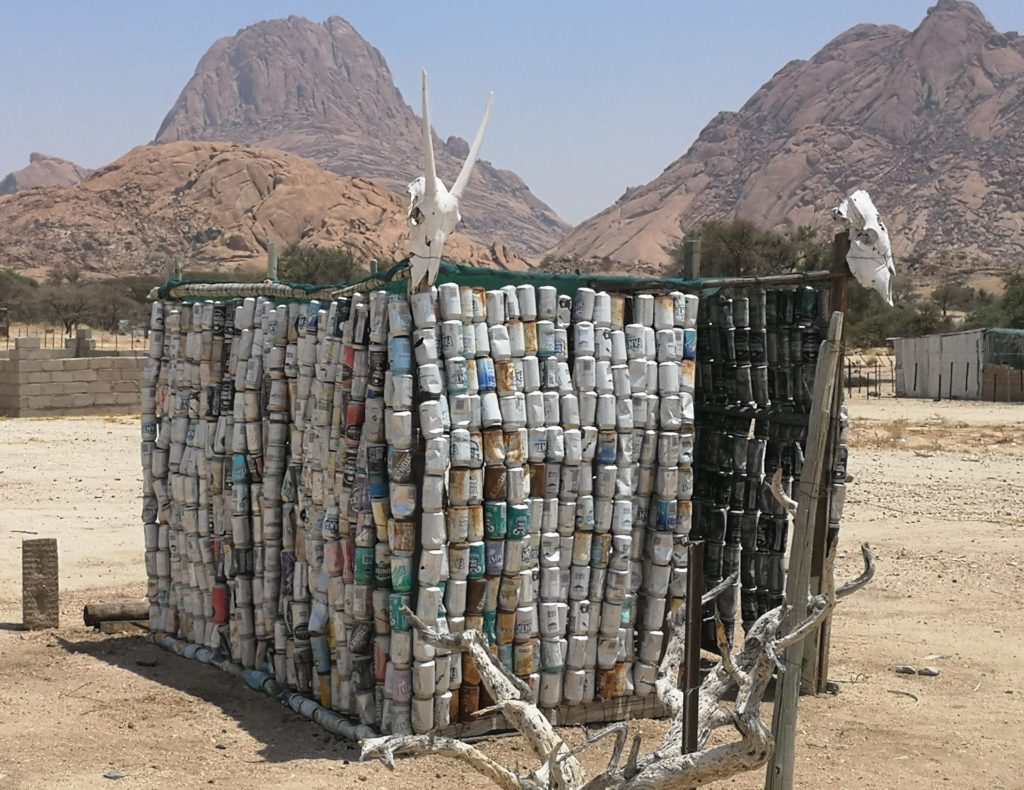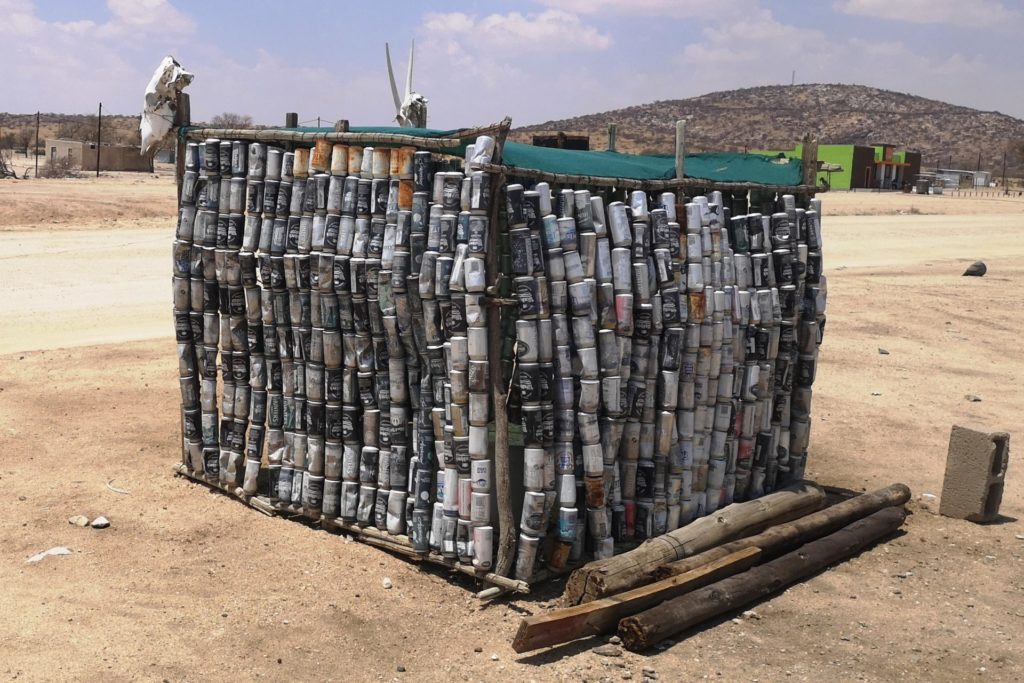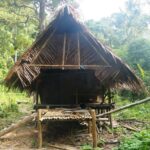Empty aluminum beer- and pop cans will serve additional purposes after guzzling the content. Besides toys and various repair applications, these cans can build huts and houses! As can be seen in Texas, the US here, or Australia there, which even got them into the Australian Book of Records. On the way to Spitzkoppe in Namibia, a beer can hut was built as a shelter against the sun. Which is more of a curiosity, but it also serves practical purposes and promotes out-of-the-box thinking.

This local engineer built a cubic frame from hardwood poles, which he reinforced with an additional vertical pole in the middle of each frame. Closing the front entrance with a door or similar contraption seemed unnecessary. On the sidewalls, wires were tightly stretched side-by-side, and each wire was filled with cans. There were holes in the can bottoms necessary to thread the cables. The air can move freely between the cans, avoiding heat contraptions within the shelter. And the air within the empty cans acts as an insulator against direct sunlight heat.

Finally, a thick woven plastic sheet was added as a roof, keeping out sun rays as much as possible. Rain protection is not necessary in this part of the world, but the opposite holds: rain would be highly welcomed—at least for a short time.

Beer can hut aesthetics.
This local engineer had some sense of aesthetics: He used an Oryx antelope- and a Zebra skull as ornaments on top of the entrance frame poles. A concrete block behind the beer can hut acts as a chair for this gentleman, where he also keeps spare wood for further construction.
Although this beer can hut seems a bit strange at first, it is definitely better suited to the local weather conditions than corrugated tin sheets, which are normally used at ‘well-looking’ huts.
Lessons learned about the beer can shelter:
- Collect all empty beer cans in the future for construction work 😊
- Always judge first: what is necessary. In this case, it was protection against the sun, avoiding heat traps, and insulating the walls against direct sunlight.
- Never judge a contraption before having deeply considered it. Sometimes, it is surprising what out-of-the-box thinking can bring up.
.




